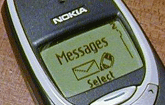
Antivirus companies have recently put out an advisory for a piece of malware called “PWSteal.Wowcraft”. And what does this computer virus do? As Symantec describes it:
PWSteal.Wowcraft is a password-stealing Trojan horse that attempts to steal the password to the “World of Warcraft” game and send it to the creator of the Trojan.
This is ever more evidence that the economy of virtual worlds is becoming so lucrative that crime — in all its variants — is moving there. Over the last few years, we’ve seen all manner of chicanery, such as “dupers” that, like real-world counterfeiters, flood game worlds with duplicated merchandise and money, mucking heavily with the world’s currency and economy. There have also lately been on-line muggings, and, as I reported in The Walrus a year ago, mafias and organized crime. Given, of course, that a world based on code is eminently hackable, we’re likely to see ever more — and ever weirder — crimes as time goes on.
At first, when I heard of the Wowcraft trojan, I thought hmmm: Virtual-world crime is considerably easier to pull off than real-world crime, because role-playing games are filled with virtual items that are easy to steal. When you steal someone’s World of Warcraft password, you can go in and force their avatar to hand over all their goods and in-world currency to the criminal’s account, then quickly sell the stuff on ebay or any online game-merchandise site. It’s very easy to make game-world stuff liquid.
But then I realized, hey, how is this different from real-world digital crime? A Russian cracker gang gets the information to your bank account, goes in pretending to be you, transfers the money to a foreign bank, then extracts it and washes it clean. Sure, role-playing games are rife with possibilities for identity theft. But the real world of commerce and finance is itself, by now, almost indistinguishable from a role-playing game.
I can’t wait until a US-based court gets ahold of one of these cases.
(Thanks to Kottke, Steve Emrich and Joe Wilson for these!)

Right-wing and left-wing partisans alike have blogs they travel to every day for their daily screechifying, such as Instapundit and Daily Kos. But do these sites have any effect? And who’s winning the war of ideas — and producing more real-world influence — in the blogosphere?
A new report by NDN PAC, a progressive group, has been the first to try and quantify the impact of both conservative and liberal blogs. The results are surprising: They conclude that conservatives had an early headstart, such that in 2003 the right-wing blogosphere was two or three times larger than the liberal one. But by 2005, progressive blog world had erupted in size — triggered by the 2004 elections — and is now double the size of the conservative one, in terms of sheer traffic.
Yet NDN concludes that liberal blogs are not necessarily having as big an impact, because of fundamental differences between the way conservatives and liberals use blogs. Liberals may have more traffic, but they have fewer overall blogs. To put it another way, progressives have a small number of enormously-well-read blogs, which conservatives have a large number of blogs with small audiences. That’s partly because of how conservatives use them: NDN claims that the right mostly uses blogs as extensions of pre-existing party structures and organizations; they also more often devote blogs to local issues. The upshot is that conservative blogs have a bigger impact on the real world, since they’re connected to real-world party structures and are focussed on real-world problems all over the country. As the report writers note:
Pennsylvania offers a useful case study. Philadelphia is arguably the nation’s progressive blogging capital. With at least fifteen of the one-hundred and three progressive blogs surveyed by MyDD, not to mention ten of the top fifty most trafficked left wing blogs, one might imagine that local Pennsylvania political blogs are dominated by progressives. Yet, the primary two sites dedicated to Pennsylvania statewide politics were Grassroots PA and Keystone politics, both of which are conservative. Even in a region steeped in popular left wing blogs, conservatives rule the local political blogosphere.
It’s a really interesting report — I’ve never seen anyone analyse cyberspace this way.

The latest example of citizen newsgathering: At 9 am this morning, there was a stabbing murder at Teany, the teahouse owned by Moby in the Lower East Side of Manhattan. Yet by 3:41 pm, as Rachel at FishbowlNY reports, no local papers had posted any news on their websites. The only news came via several blogs — including a first-person account from a blogger named Sarah, a piece and a photo (which I’ve used above) of the crime scene on Gawker, and a note on Gothamist. Granted, this isn’t terribly in-depth newsgathering — the Gothamist posting merely pointed to the Gawker entry. But the comments are quite interesting, including a note on Gothamist by a neighbor:
i live in that building and it was horrible to leave my apartment this morning to find a pool of blood outside of the doorway and then have to climb over the railing to avoid the murder scene.
Yipes. Perhaps predictably, at both Gothamist and at Sarah’s blog, the commentors wound getting in long, numbing arguments about hipsters, yuppies, and whether the Lower East Side still has any “edge”.
(Thanks to Rachel Sklar for this one!)
I’m working on one of these men’s-magazine columns I periodically write on workplace politics, and am on the hunt for possible interview subjects. The subject is pretty funny: It’s about what happens when a guy is suddenly appointed head of his department, his team, or his office — and has to figure out some dramatic move to illustrate that he’s now in charge. Firing someone? Boldly changing the flavor of coffee in the communal kitchen? The examples could be small, medium, funny, pathetic, ridiculous, or whatever — and the guy has to be in his 20s or 30s.
Know anyone who fits the bill and wants to tell me his story? If so, email me and let me know! Anonymity’s not a problem if someone has a funny story but doesn’t want to get in trouble for telling it — and the deadline is Friday.

How can you turn a massive, fuel-chewing Hummer into a zero-emissions vehicle? By buying “pollution credits” — via this wacky new company called TerraPass. The concept works the same way that the “cap and trade” emissions-trading system works between companies and countries: If you pollute more than you’re supposed to, you can buy a “credit” from someone who has voluntarily reduced their emissions to a nice green level. Theoretically, this keeps pollution to a regulated, accepted level, and encourages firms to voluntarily buy new superefficient technologies that reduce their emissions, because they can offset those costs by selling pollution credits.
Now TerraPass offers this deal — for cars. As a story in CNN reports:
The stickers TerraPass sends its customers do nothing to stop pollutants from coming out of a car’s tailpipe. Instead, the company offers its customers the chance to reduce pollutants from other sources, like power plants, in an amount equivalent to that produced by their car.
That way, you can drive your car while having no net effect on the amount of pollution in the air, the company says.
Apparently, it only costs $160 to effectively render your Hummer into a zero-emissions vehicle. Which to me is where you can see the fissures in this scheme — because I’m pretty sure that if you calculated the amount of carbon a Hummer spits out in its lifetime, it’d cost quite a lot more than $160 to remove it from the air. I’m sure the cost will go down as carbon-sequestration technology improves — and part of the goal of cap-and-trade schemes is to encourage the development and adoption of better sequestration tech, of course, so you could argue that we gotta start somewhere. Taken on its own terms, TerraPass is a pretty clever idea, I’d say.
But they’ve only sold 620 passes so far — and most were bought by eco-freaks who already buy super-low-emission cars. As founder Tom Arnold notes: “We fully expected to target SUV drivers with SUV guilt,” but “it just doesn’t exist.”

Recently, New York Times columnist Thomas Friedman wrote about how radical Islamic fundamentalists were creating video games to whip up their young into righteous fury. “Video games matter”, as Friedman wrote, which is a bang-on point. Video-game companies — and gaming advocates — like to defend violent games by saying that “games don’t affect behavior”, but this is obviously false. They’re media, and that’s one of the things media does: Influence our behavior.
But what precisely are the Islamic games actually like? What do they teach? The only way to know is to play ‘em, and of course none of the pundits who inveighed against them actually did so. So the very cool writer Chris Suellentrop dutifully ordered three games recently discussed in the Washington Post, played them, and described the experience in Slate. It’s a hilarious and valuable piece, not least because he discovers that, far from being evidence of al-Qaeda’s growing digital sophistication, the games seem to prove that “radical Islam dreams not only of restoring the borders of the Caliphate, but also of freezing gaming technology at the level of the old Nintendo Entertainment System.” Heh. (That’s a screenshot from Maze of Destiny, one of the Islamic games, above.) Chris’ best observation, though, comes here:
The fact that these games are derivative, look primitive, and aren’t very fun to play doesn’t mean they’re not important. But they’re also ideologically untroubling. In the Ummah Defense games, the “disbelievers” that must be destroyed are robots, not human soldiers. There’s an outside chance that the robots are a metaphor for the Predator drones used by the United States military, but I doubt these games are going for that level of subtlety. It’s more likely that the robots are a metaphor for Space Invaders.
If you ignore the titles of the Ummah Defense games and the occasional in-game messages — “Alhamdulillah, You Destroyed the Command Ship!” — it’s impossible to tell that you’re playing an “Islamic game.” When I destroyed the third of the four command ships controlling the “Flying Evil Robot Armada” in the first Ummah Defense, I didn’t ruminate on whether my real-life allegiance should be with the robots. I just thought, only one more ship to go!
This is, more precisely, the real point about why point-and-shoot action games suck as tools of indoctrination: Their narratives rarely matter. In an action-shooter game, the real narrative — the one that matters — isn’t the type of uniforms or country you’re fighting; it’s the the physics. The emotional and cognitive content of the game is just about being physically graceful enough to achieve your goals in fast-moving, fast-changing environment — a statement that defines everything Half-Life 2 to football.
The problem with Friedman — and other pundits who don’t play games — is that all they see is what’s happening on the screen. And sure, on the screen, you might be fighting Nazis, or contras, or green-blooded aliens, or the Civil War South. But in the gamer’s mind, it’s all just vectors and motion: After a few hours of playing the game, the external reference points boil away. Talk to chess grandmasters and it’s the same thing. They don’t look down at the board and think, oh, this is a war-like situation in which a powerful queen is defending a hapless, old, past-his-prime king. They just see abstract forces, the platonic interactions of the game’s rule-set. Some masters have told me that they do not even visualize the pieces any more — just the interactions between then.
Action video-games are actually quite similar. A while ago for Slate, I wrote about how Japanese gamers were big fans of the WWII title Medal of Honor: Rising Sun, in which they player takes the role of American forces invading Japan. At first, this struck me as weird, because after all, the kids playing the game were, in essence, joyfully and repeatedly killing virtual representations of their fathers and grandfathers. But that’s not how they saw it at all. It was just “a good war game”, or even more generically, a good game: A bucket of well-designed rules and goals, artfully arranged so as to make success teasingly difficult but not impossible. Like all gamers, they interact with action games on their ludological level — not their narrative and symbolic level.
And that’s why action games don’t work very well as tools of nationalistic indoctrination. They teach excellent eye-hand co-ordination and strategic movement, and they can sometimes be good at desensitizing you so you’ll shoot to kill as a lizard-brain instinct — a nontrivial proposition, which is precisely why the police and military use them with recruits. And you could say that action games have a strong ideological content, insofar as they suggest that killing lots of people is totally okay and wickedly fun.
But when it comes to promoting specific national ideologies? Action video-games are useless. Their narratives simply do not matter; they are not the reason people play them or enjoy them.
(Thanks to Paul Boutin for this one!)

Dig this: A new study has found that sexy or violent pictures can render you temporarily “blinded”— and unable to register any new images for several tenths of a second. The scientists sat a bunch of people down and asked them to identify a particular target image, as a bunch of pictures rapidly flashed by. Most people had no problem spotting the target image — except when it had been preceded directly by a highly erotic or violent picture. Why? As David Zald, one of the researchers, told the New Scientist:
“We think there is essentially a bottleneck for information processing and if a certain type of stimulus captures attention, it can jam up the bottleneck so subsequent information can’t get through,” Zald explains. “It appears to happen involuntarily. The stimulus captures attention and once allocated to that particular stimulus, no other stimuli can get through.”
This has some intriguing policy implications for highway control. If these guys are right, huge roadside billboards of sexy hotties might actually cause accidents: When you’re zooming along at 60 miles an hour, being blinded for even a fraction of second could get somebody killed. And man, would it ever suck to get killed because of a Hooters billboard.
Interestingly, the scientists also found that some people are more susceptible to this effect than others. People who had low “harm avoidance” instincts — i.e. Xtreme sports freaks — didn’t get shorted out as much as more-nervous types. Maybe it’s because their brains are accustomed to ignoring freaky stimuli? Anyway, what I’d be interested to see is what the longitudinal effects of the consumption of porn and violent entertainment have on this “blindness”. If you’ve spent years downloading nekkid pictures from the Internet or watching splatter flicks, is your brain more — or less — likely to be shorted out by suggestive images?

Back during 9/11, New York’s phone system was crippled, so I had only sporadic access to the Internet; I could get online for a few minutes, but would often get bumped off. To quickly let my Canadian friends know I was alive, I sent an email to one well-connected friend in Toronto and asked him to forward to everyone I knew up there. These days, texting is an even faster way to let loved ones know you haven’t been killed in a recent terrorist attack. But it has the same one-to-many problem: In a crisis, it’s too laborious to to send message to dozens of people.
Thus was born the idea for textOK, a new service in Britain that works like this: You sign up at the textOK web site and input a big list of every phone number you’d like to contact in an emergency. When the next car bomb goes off in downtown London, you just send an SMS to textOK’s number — 60999 — and the service will bulk-blast a message to your posse telling them you’re still alive. It costs 25p, which apparently will be donated to charity.
Perhaps most intriguingly, textOK argues that their service has positive network effects:
Keeps the phone network alive — lots of people sending 1 text message through us instead of making phone calls will drastically reduce the amount of network traffic.
(Thanks to Engadget for this one!)

One of my favorite Onion stories is “Study Reveals: Babies Are Stupid”, in which scientists give intelligence tests to 3,500 babies and conclude that the infants are “so stupid, it’s not even funny.” It’s a neat parody of the inherent strangeness of the infant mind: When it comes to tiny children, the quirks of their uninformed behavior can seem either dumb as hell — or cognitively intriguing.
As an example of the latter, Judy S. DeLoache has published a totally fascinating piece in Scientific American discussing her research into children’s ability to engage in “symbolic thinking”. She started out by noticing that many infants younger than one year frequently assume a realistic color picture of an object is the object: In experiments, she’s found that infants will try to pick up a photographic object, or even try to stick their feet into a photograph of a shoe. Obviously, the kids can’t tell a picture from reality; they cannot separate the symbol of an object from the thing itself.
But things got really interesting in the next phase of DeLoache’s work. She brought a bunch of 18-to-30-month-old kids into a room where they could play with a set of toys: an indoor slide, a child-size chair and a car they could ride in. Then she took the children out for a break, and while they were out of the room, replaced the toys with identical, minature versions. When the kids came back in …
… they attempted with apparent seriousness to perform the same actions with the miniature items that they had with the large ones. Some sat down on the little chair: they walked up to it, turned around, bent their knees and lowered themselves onto it. Some simply perched on top, others sat down so hard that the chair skittered out from under them … A few kids tried to get into the tiny car. Just as they had done with the large version, they opened the door and attempted — often with remarkable persistence — to force a foot inside. One little girl went so far as to take off her shoe in the apparent hope that her foot would then fit!
This research has enormous implications for any field where adults have to interact with children. For example, consider the way social workers, while interviewing a child about possible sexual abuse, will ask a child to point to a doll to show how and where they were touched. The problem, DeLoache argues, is that many young children won’t have the ability to symbolically map their body onto a doll’s body; and in fact, controlled studies have found that children make fewer errors when simply describing verbally what happened to them — since they don’t need to manipulate symbols to do so.
Education’s another big area. When teachers try to show kids subtraction or addition, they typically use objects — like coins, sticks, whatever — to represent quantities. But DeLoache suspects many children cannot easily yet separate the symbolic nature of numbers — the “threeness” of a trio of apples, for example — from the actual objects themselves. In an even more mindblowing experiment, she taught two groups of six-and-seven-year-old kids to do subtraction problems that involve borrowing, a rather sophisticated concept. One group of kids was taught using pencil and paper; the other was taught using blocks. Both groups learned the concept, but the kids with blocks took three times longer. Why? Because learning the concept with pencil and paper requires the kids to immediately interact with abstract symbolic concepts. The kids working with blocks, paradoxically, had to do more mental work — since they had to separate the concept of numbers from the blocks they were working with.
That’s delightfully counterintuitive. We normally assume that teaching math using these sort of visual aids makes things easier, not harder. If DeLoache’s work holds up under scrutiny, it ought to have a massive impact on preschool and primary-school education.
(Thanks to Arts and Letters Daily for this one!)

Anyone who’s a serious space buff — like me — has spent the last decade getting increasingly depressed about the Space Shuttle, which is now such a howlingly useless waste of government money that it seems like something dreamed up by North Korea. Now Maciej Ceglowski has written “A Rocket to Nowhere,” a definitive indictment of the Shuttle program, as well as an excellent primer on how its design came to be, and why it makes so little sense. As you’d probably expect, military and congressional politics are to blame, but the devil’s in the details, and they’re quite interesting. As Ceglowski concludes:
In the thirty years since the last Moon flight, we have succeeded in creating a perfectly self-contained manned space program, in which the Shuttle goes up to save the Space Station (undermanned, incomplete, breaking down, filled with garbage, and dropping at a hundred meters per day), and the Space Station offers the Shuttle a mission and a destination. The Columbia accident has added a beautiful finishing symmetry — the Shuttle is now required to fly to the ISS, which will serve as an inspection station for the fragile thermal tiles, and a lifeboat in case something goes seriously wrong.
This closed cycle is so perfect that the last NASA administrator even cancelled the only mission in which there was a compelling need for a manned space flight — the Hubble telescope repair and upgrade — on the grounds that it would be too dangerous to fly the Shuttle away from the ISS, thereby detaching the program from its last connection to reason and leaving it free to float off into its current absurdist theater of backflips, gap fillers, Canadarms and heroic expeditions to the bottom of the spacecraft.
I couldn’t say it better. The Shuttle has become like a Potemkin space program, built purely for the purpose of appearing to exist. I need a stiff drink just thinking about it.
(Thanks to Jason Kottke for this one!)

I always figured that old photos look old because they’re, uh, old — i.e. they’ve spent a couple of decades mouldering in Aunt Ida’s attic, and they’ve faded and creep-ified with age. But the blogger over at Smallest Photo recently got his hands on a fully-functioning Autographic Kodak Junior Model A from around 1914. He took a bunch of pictures with it, and sure enough, they too look as metallically eerie and ghostlike as if they’d been lost in archives for a century. That picture above is of the graveyard at St. Mary’s Church in Wimbledon; he’s got a few others at his site. Of the camera, he notes:
One particularly interesting feature is that there’s a small door in the back which houses a metal stylus. By opening a small window that opened onto the back of the film paper as it moved through the camera and applying pressure with the stylus, you could compress the emulsion on the film. This allowed you to record a text image of your choice giving you the opportunity of naming each particular frame.This medium fomat camera takes 120 film. Speeds 25, 50, T, B.f stops 4 - 64.
A built-in f/x device! Anyway, I don’t know why I should have been so surprised by these pictures; it’s obvious that different media have different aesthetics. (My personal fave is the Fisher Price Pixelvision camera, which shoots images of such low-fi black-and-white weirdness that Michael Almereyda used it to shoot a vampire’s-eye view of the world in his horror flick Nadja.) Though we tend to think that today’s 9-bazillion-megapixel cameras are capturing reality with increasing precision, I wonder what sort of aesthetic bias we’ll find it when, fifty years hence, we haul out the vacation shots we took this summer.
(Thanks to Jason Kottke for this one!)
This is pretty amusing: A few years ago, Eric Raymond — open-source hacker and essayist par excellence — wrote “Sex Tips For Geeks: The Art of the Pickup”. My favorite part of the essay begins when he offers his central tip on acquiring confidence: “Fake it.”
I realize that this goes against all the standard advice you get from the usual well-meaning people, who will begin and end with “be yourself”. If yourself is chronically inept with attractive women, this advice sucks. You need to learn method acting. At that party, watch guys who are chatting up women effectively. Imitate them. Don’t worry too hard about replicating their mental states or understanding why they do what they do; if you do their moves understanding will happen naturally over time. Play the role of confident person until you become it.
In one sense, the essay is as irreparably dorky as you might imagine, with its insistence that the cardinal rule in dating is that “women can smell fear”. So I immediately wrote this off as yet another attempt by geeks to cope with the social chaos of everyday life by rigidly systematizing it. How typically nerdy!
But then it occurred to me that of all fields of human endeavour, dating is the one most crowded with desperate how-to manuals and Skinnerian throughput analyses of emotional states, all in the service of cowherding a partner into desired behavior. Women had The Rules, which counselled women to conceal their real personality and pretend to be undemanding, while also remaining paradoxically inaccessible. Meanwhile, men have the byzantine techniques — including the infamous “neg hit” — outlined in Neil Strauss’ upcoming The Game: Penetrating the Secret Society of Pickup Artists. When it comes to mating, it seems, everyone’s a hacker. When did we turn into a nation of social engineers?
(Thanks to F!lter for this one!)

A few months ago, the New York Times Magazine asked me to write a story about machinima — the use of video-game systems to produce animated movies. The story came out last weekend, and I’ve put a copy online below; you can also read it on the Times web site!
The Xbox Auteurs
by Clive ThompsonLike many young hipsters in Austin, Tex., Michael Burns wanted to make it big in some creative field — perhaps writing comedy scripts in Hollywood. Instead, he wound up in a dead-end job, managing a call center. To kill time, he made friends with a group of equally clever and bored young men at the company where he worked, and they’d sit around talking about their shared passion: video games. Their favorite title was Halo, a best-selling Xbox game in which players control armor-clad soldiers as they wander through gorgeous coastal forests and grim military bunkers and fight an army of lizardlike aliens. Burns and his gang especially loved the “team versus team” mode, which is like a digital version of paint ball: instead of fighting aliens, players hook their Xboxes to the Internet, then log on together in a single game, at which point they assemble into two teams — red-armored soldiers versus blue-armored ones. Instead of shooting aliens, they try to slaughter one another, using grenades, machine guns and death rays. On evenings and weekends, Burns and his friends would cluster around their TV’s until the wee hours of the morning, gleefully blowing one another to pieces.
“Halo is like crack,” Burns recalls thinking. “I could play it until I die.”
I’m getting my one week of vacation this summer, so there’ll be no postings until this coming weekend. Please do not adjust your blog.
I’m getting my one week of vacation this summer, so there’ll be no postings until this coming weekend. Please do not adjust your blog.

If you’re ever in a rush, and you’re taking an elevator and don’t want to be forced to stop for other people, try this intriguing elevator hack. Apparently it’s possible to totally 0wnz0r the machine, as TheDamnBlog.com reports:
The designers of some elevators include a hidden feature that is very handy if you’re in a hurry or it’s a busy time in the building (like check-out time in a hotel). While some elevators require a key, others can be put into “Express” mode by pressing the “Door Close” and “Floor” buttons at the same time. This sweeps the car to the floor of your choice and avoids stops at any other floor.
This reminds of Colson Whitehead’s superb novel The Intuitionist, which is about elevator repairpeople, and contains reams of amazing trivia about elevators. There’s an excerpt here on Salon.
(Thanks to Gizmodo for this one!)

Back in those go-go 90s, Internet Service Providers loved using the iconography of race-car spedometers to illustrate the mindblowing joy you’d experience while surfing on their screamin’ 56K dial-up connections. Now Speakeasy, the hipster left-coast ISP, has created a fun little Flash spedometer that measures precisely how fast your download and upload speeds are. Test your ISP and make sure you’re actually getting the bandwidth you’re paying for! Or, as Joe suggests:
Speakeasy is also useful when you’re staying somewhere, like a hotel, advertising such and such high–speed internet: test it, then print out the results and bring them down to the front desk and demand a rate reduction for false advertising.
Might be amusing with the right manager.
Heh.
(Thanks to the Book of Joe for this one!)

Does chewing gum improve your memory? Apparently so, according to a new study by three British scientists published in the latest issue of the journal Apetite. The researchers had 75 adults perform twenty minutes’ worth of memory and attention tests. One third of the participants chewed gum during the tests; one third “mimicked chewing movements”, and the remaining third did not chew at all. The gum-chewers scored 24 per cent higher on word-recall tests performed immediately, and 36 per cent higher when the tests were performed later. As the New Scientist reports:
There are three main potential explanations, says Scholey. In March 2000, Japanese researchers showed that brain activity in the hippocampus, an area important for memory, increases while people chew — but it is not clear why.
Recent research has also found that insulin receptors in the hippocampus may be involved in memory. “Insulin mops up glucose in the bloodstream and chewing causes the release of insulin, because the body is expecting food. If insulin receptors in the brain are involved in memory, we may have an insulin-mediated mechanism explaining our findings — but that is very, very speculative,” Scholey says.
But there could be a simpler answer. “One interesting thing we saw in our study was that chewing increased heart rate. Anything that improves delivery of things like oxygen in the brain, such as an increased heart rate, is a potential cognitive enhancer to some degree,” he says.
Interestingly, gum-chewing did nothing to improve “memory-linked reaction times”, a key indicator of attention; so while chomping on some Juicy Fruit can bolster your recall, it won’t help you keep fresh if you’re spaced out. Nonetheless, gum companies like Wrigley have long touted the mental-enhancement effects of chewing — even boasting on its web site about how the US army has distributed gum to troops since World War I.
I'm Clive Thompson, the author of Smarter Than You Think: How Technology is Changing Our Minds for the Better (Penguin Press). You can order the book now at Amazon, Barnes and Noble, Powells, Indiebound, or through your local bookstore! I'm also a contributing writer for the New York Times Magazine and a columnist for Wired magazine. Email is here or ping me via the antiquated form of AOL IM (pomeranian99).

ECHO
Erik Weissengruber
Vespaboy
Terri Senft
Tom Igoe
El Rey Del Art
Morgan Noel
Maura Johnston
Cori Eckert
Heather Gold
Andrew Hearst
Chris Allbritton
Bret Dawson
Michele Tepper
Sharyn November
Gail Jaitin
Barnaby Marshall
Frankly, I'd Rather Not
The Shifted Librarian
Ryan Bigge
Nick Denton
Howard Sherman's Nuggets
Serial Deviant
Ellen McDermott
Jeff Liu
Marc Kelsey
Chris Shieh
Iron Monkey
Diversions
Rob Toole
Donut Rock City
Ross Judson
Idle Words
J-Walk Blog
The Antic Muse
Tribblescape
Little Things
Jeff Heer
Abstract Dynamics
Snark Market
Plastic Bag
Sensory Impact
Incoming Signals
MemeFirst
MemoryCard
Majikthise
Ludonauts
Boing Boing
Slashdot
Atrios
Smart Mobs
Plastic
Ludology.org
The Feature
Gizmodo
game girl
Mindjack
Techdirt Wireless News
Corante Gaming blog
Corante Social Software blog
ECHO
SciTech Daily
Arts and Letters Daily
Textually.org
BlogPulse
Robots.net
Alan Reiter's Wireless Data Weblog
Brad DeLong
Viral Marketing Blog
Gameblogs
Slashdot Games